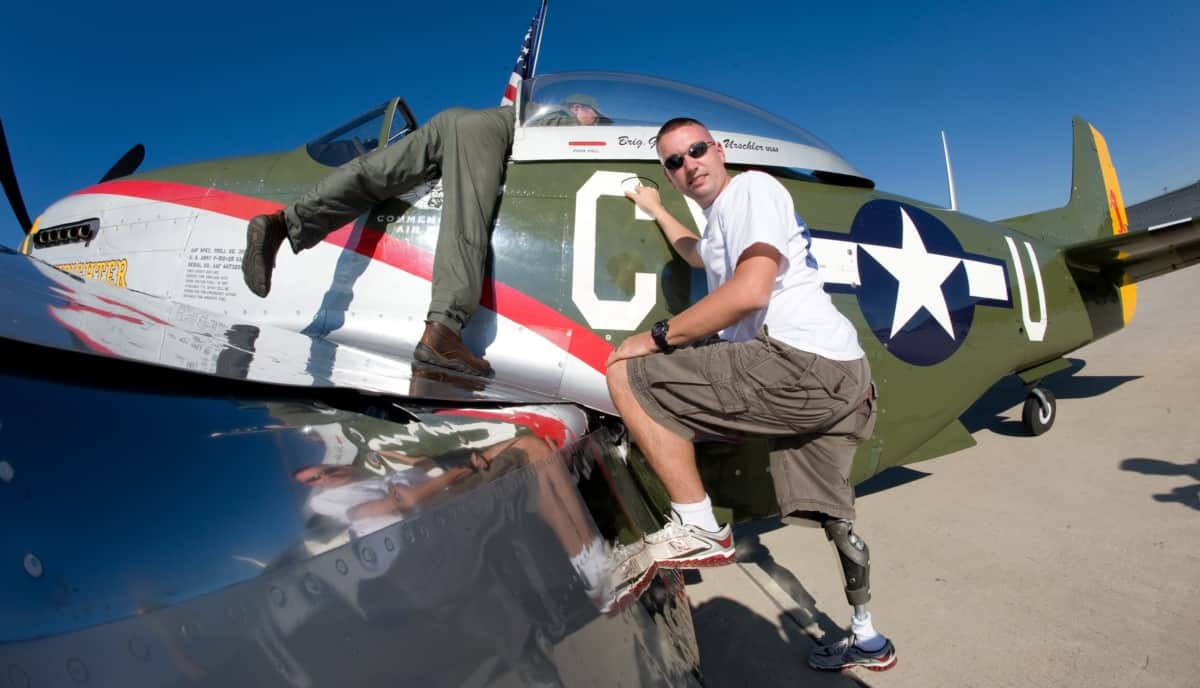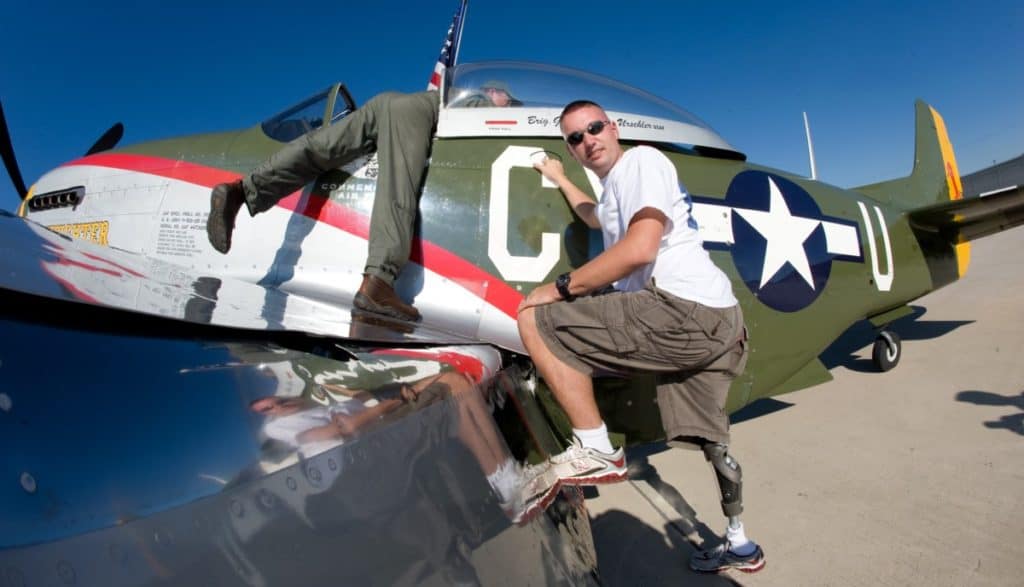
Learning to fly an aircraft is one of the most challenging but rewarding experiences a person can have, but not everyone can learn to fly. There are certain medical conditions that can prevent a person from learning to fly, but there are more and more people with disabilities overcoming these barriers to achieve their dream.
Depending on the disability, many people can still learn to fly with medication, adapted flight controls, or with a safety pilot on board. Specialized training and working closely with an FAA medical examiner will dictate if the disabilities make learning to fly prohibitive.
There are many, many disabled pilots flying all over the world with some incredible charities, associations, and scholarships striving to get as many disabled people into the air. This article is written to try and provide you with the most comprehensive guide to help put you in touch with the right information and contacts to allow you to get training.
What Disabilities Prevent a Person From Learning to Fly?
Persons with a disability can be issued an aviation medical certificate providing they can demonstrate they can safely operate the aircraft with or without flight control modifications, but certain mental and neurological diseases may prevent any issuance of an aviation medical certificate.
The FAA has a list of disqualifying medical conditions that if not able to be controlled with medication to meet the required standard will prevent a person from obtaining an Airmen Medical Certificate.
FAA’s Prohibitive Pilot Medical Conditions are:
- Angina pectoris
- Bipolar disease
- Cardiac valve replacement
- Coronary heart disease that has been treated or, if untreated, that has been symptomatic or clinically significant
- Diabetes mellitus requiring hypoglycemic medications
- Disturbance of consciousness without satisfactory explanation of the cause
- Epilepsy
- Heart replacement
- Myocardial infarction
- Permanent cardiac pacemaker
- A personality disorder that is severe enough to have repeatedly manifested itself by overt acts
- Psychosis
- Substance abuse
- Substance dependence
- Transient loss of control of nervous system function(s) without satisfactory explanation of the cause
You can find out more about this list HERE at the FAA’s website.
In addition to this list are the physical limitations a person may have. Most aircraft require the use of both hands and both feet and if one or more of those limbs is missing then additional means will have to be sought to modify an aircraft to be controlled.
When looking to become a pilot, the FAA will take each person on a case-by-case basis to examine and evaluate the disability to decide if a medical certificate can be issued or if other actions can be taken to allow that person to become a pilot. If an Airman Medical Certificate cannot be gained there are other options, so keep reading!
The FAA has set medical standards for each of its 3 classes of medical certificates. Depending on the level of responsibility a pilot wishes to seek, will dictate which medical certificate they may qualify for. Each medical examination must be completed by an FAA Approved Medical Examiner (AME) and there is usually one not too far from you.
Many local family doctors will become certified as an AME and with over 6000 listed in the U.S. you can use this tool from the FAA to find one closest to you – FAA AME FINDER
Here are the three classes of aviation medical certificates:
First-Class Airmen Medical Certificate
This has the strictest medical standards as it is designed for professional airline and commercial pilots that fly large aircraft. Unfortunately, most applicants that have a major, life-changing disability will not be able to meet the required standards to obtain a first-class medical certificate.
You can find out more about the exact medical standards of the First-Class Airmen Medical Certificate at the FAA Regulations website HERE
Second-Class Airmen Medical Certificate
This medical certificate is for those pilots who wish to fly commercial operations. Charter flights, tours, utility operations, EMS, flight instruction, or any other type of flying where the pilot gets financial compensation. There are some pilots with disabilities who are able to gain this type of medical certificate depending on their disability.
You can find out more about the exact medical standards of the Second-Class Airmen Medical Certificate at the FAA Regulations website HERE
Third-Class Airmen Medical Certificate
This medical certificate has the most lenient medical standards and is aimed at student pilots, recreational pilots, and private pilots who wish to fly for pleasure and/or own their own aircraft. No financial gain can be achieved by pilots flying with these types of pilot certificates. There are many pilots with disabilities who fly under this class of medical certificate.
You can find out more about the exact medical standards of the Second-Class Airmen Medical Certificate at the FAA Regulations website HERE
No Airmen Medical Certificate
This is by far the most popular option when it comes to a person with disabilities learning to fly. The FAA allows any person to fly a Sport category airplane, glider, or balloon with only a valid U.S. driving license, so those who can drive with their disability, can also fly!
Any restrictions imposed on the driving license must also be adhered to while flying, but this allows many more people to access aviation!
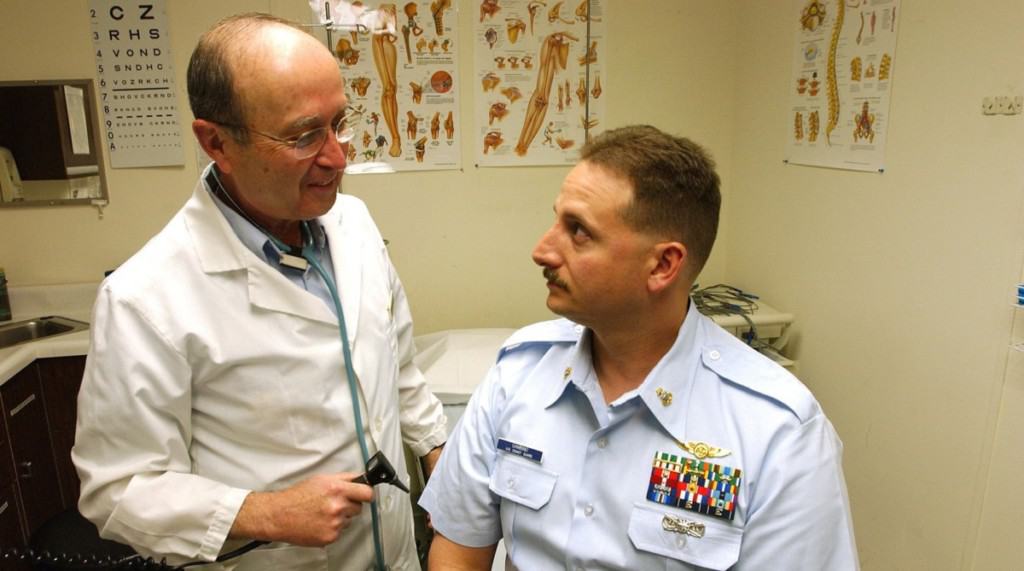
For more information on each type of Airmen Medical Certificate please see my article:
Pilot Medical Exam – What You Need To Pass Each Class
If a person has a medical condition listed above or a mobility issue and they wish to fly an aircraft with more than two seats there are two additions/certificates/waivers that can be applied for that COULD allow that person to be able to fly.
Those two certificates are:
- SIMC – Special Issuance Medical Certificate
- SODA – Statement of Demonstrated Ability Certificate

Join My Newsletter & Get Great Tips, Information and Experiences To Help You Become a Superb Pilot!
What is the Difference Between a Special Issuance Medical Certificate (SIMC) Vs Statement of Demonstrated Ability (SODA) Certificate?
What is a Special Issuance Medical Certificate?
For a person with an FAA-disqualifying medical condition, they can apply for a Special Issuance Medical Certificate. An examination with a Federal Air Surgeon will be required and it is issued at their discretion and with their recommended limitations. The SIMC can be revoked at any time.
To satisfy the medical examiner a person may be required to show medication and medical history may require regular examinations and the limitations and restrictions may be altered at any time the medical examiners deem necessary.
What is a Statement of Demonstrated Ability?
For a person with a permanent or static disability, this is a certificate or waiver issued once a person has demonstrated they can safely operate an aircraft with or without help. This could be in the form of a flight test or a medical examination with a representative from the FAA.
When applying for either an SIMC or a SODA, the doctors will require detailed information regarding the person’s disabilities and it can take many back-and-forth correspondences and can take many months to complete. These certificates and/or waivers will only be issued once the FAA is certain of the applicant’s medical needs and abilities.
To help speed up the application process the FAA has created a website called the MedXpress that allows a person to enter all their medical information which will then allow it to be instantly accessed by any FAA Medical Examiner or Federal Air Surgeon.
You can access and create your own account at the FAA’s website HERE
There are many thousands of pilots flying in the U.S. under an SIMC or SODA and providing the applicant can demonstrate they can safely perform the necessary duties of a pilot, then they should have no issues.
Some pilots also fly with a safety pilot as part of their restrictions so until you get in touch with an FAA AME and an association familiar with pilots with disabilities (See Further Resources section below) what you may have thought was impossible, could in fact be possible!
Can People with Disabilities be an Airline Pilot?
To become an airline pilot the applicant must hold a First-Class Airmen Medical Certificate. Due to the strict medical standards required for this certificate, a disabled pilot would be unable to meet them thus denying them the ability to obtain an Airline Transport Pilot Certificate.
However, many smaller commercial operators fly charter and scheduled services that can be completed by a pilot who holds a second-class medical certificate and uses an aircraft with modified flight controls. It will be up to the individual company and the insurance, but regulatory wise there may be no issue.
Can People with Disabilities Learn to Fly an Airplane?
The level of disability of a pilot will dictate which medical certificate they qualify for, and the airplane type allowed to fly. Pilots with disabilities can fly hold a Sport Pilot, Recreational Pilot, Private Pilot & Commercial Pilot certificates depending on their disability.
- A person can hold a Sport Pilot Certificate with just a Valid U.S. driving license (14 CFR Part61 Subpart J):
- In a Sport or Light-Sport airplane that weighs no more than 1,320 lbs at take off or 1,430 lbs if operated from water
- Has a maximum speed of 120 knots ISA @ sea level
- Has a maximum of two seats including the pilot
- Has a single engine
- Has to be flown day VFR
- Pilot & passenger weight limits will need verification
- For more information on Sport Pilots AOPA has a great article on its website HERE
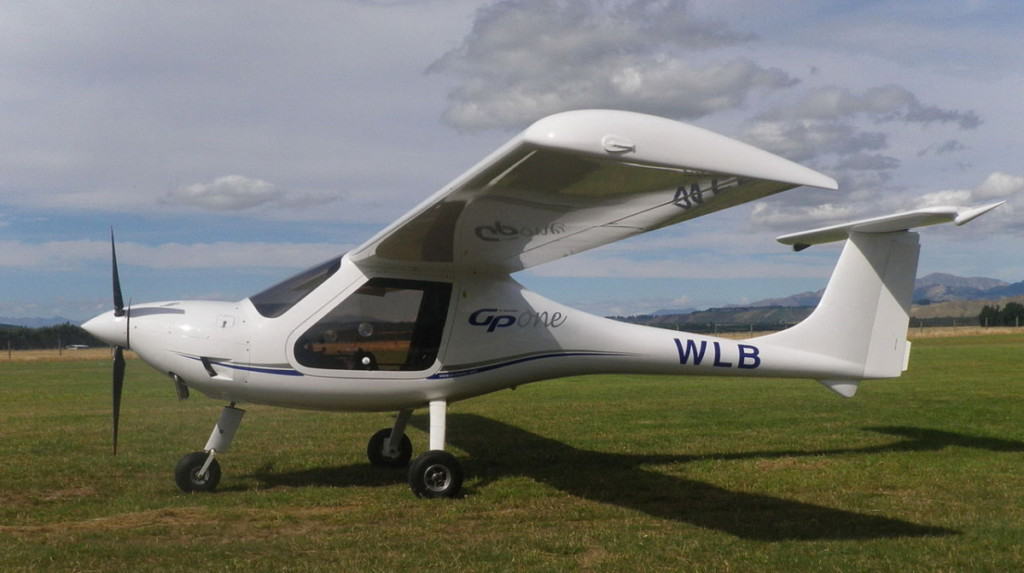
- A person can hold a Recreational Pilot Certificate with just a Third-Class Airmen Medical Certificate (14 CFR Part61 Subpart D):
- In an airplane that has a maximum engine power of 180Hp
- Has a maximum of four seats
- Only one passenger can be flown
- Flown no higher than 2000ft AGL
- Flown day VFR only
- Pilot & passenger weight limits will need verification
- A person can hold a Private Pilot Certificate with at least a Third-Class Airmen Medical Certificate (14 CFR Part61 Subpart E) :
- In any aircraft within the same category (airplane) and class in which the certificate was issued for:
- Single Engine Land or Single Engine Water (Class)
- Additional engines or classes will need further endorsements or ratings
- In any aircraft within the same category (airplane) and class in which the certificate was issued for:
- A person can hold a Commercial Pilot Certificate with at least a Second-Class Airmen Medical Certificate (14 CFR Part61 Subpart F):
- In any aircraft within the same category (airplane) and class in which the certificate was issued for:
- Single Engine Land or Single Engine Water (Class)
- Additional engines or classes will need further endorsements or ratings
- In any aircraft within the same category (airplane) and class in which the certificate was issued for:
Many airplanes can be retrofitted with modifications to the flight controls to allow a person with disabilities to control the aircraft. Many of the modifications comprise a permanent part fitted to the aircraft and then a removable part to allow anyone to fly the aircraft no matter if they are able-bodied or not.
Many disabled pilots begin with a Sport Pilot certificate which allows them to fly a Light-Sport Aircraft. There are many light sport aircraft with kits purposely designed to allow them to be installed with flight control modifications.
Can People with Disabilities Learn to Fly a Helicopter?
Depending on the individual’s disability, a helicopter may be able to have the flight controls adapted to allow it to be flown. Generally, a helicopter needs both hands and feet and the pilot will need to obtain at least a third-class airmen medical certificate & possibly a Statement of Demonstrated Ability from the FAA.
Helicopters are a very tough aircraft to learn how to fly, mainly because they require both hands and feet to be used all the time and in coordination with one another. It is for this reason alone why it will take most students at least 10 hours to begin mastering a hover – Trust me, I fly one daily!
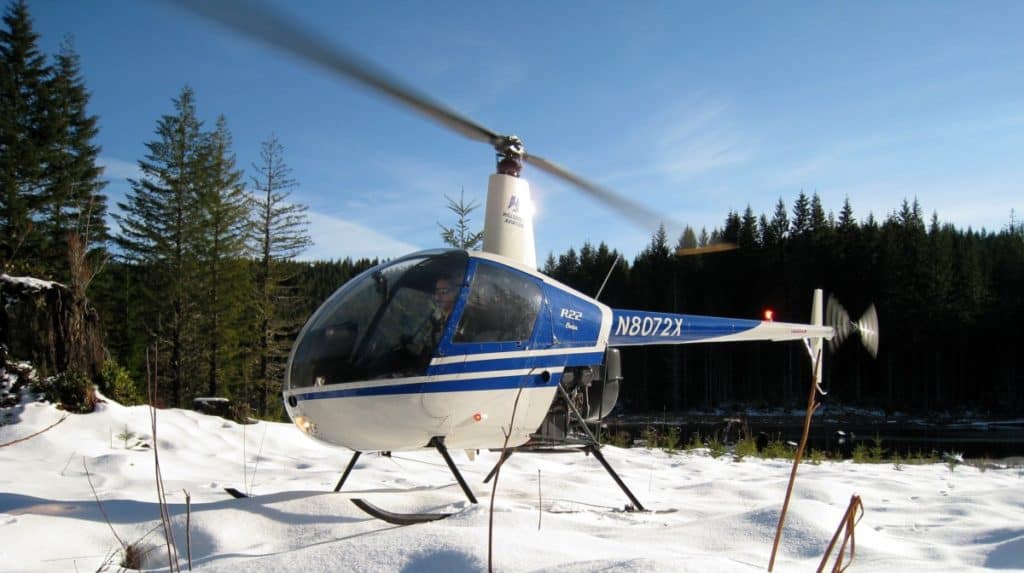
There are many pilots who fly helicopters that have a disability, but the type of disability and the level of their mobility will dictate whether a person will be able to physically control the machine and/or pass the required medical examination.
To fly a helicopter, the pilot needs to gain at least a Third-Class Airmens Medical Certificate. When being examined and during the application process, the pilot may need to demonstrate to an FAA representative that they can safely control and perform the duties of a Pilot in Command (See SODA above).
In addition to gaining the appropriate medical certificate, the helicopter may need modifications to the flight controls to allow the pilot to physically control the aircraft. Modified helicopters are rare and finding a flight school that has one, let alone caters to the exact disability of the pilot is even rarer.
Because of this, most pilots who wish to fly a helicopter with a disability will generally own their own helicopter and have the modifications done. As you can imagine this is not cheap and limits the opportunity to fly a helicopter to only those with the financial means!
There have been a few attempts over the years to create a flight school dedicated to helping pilots with disabilities but with such a small market, they have unfortunately been unable to operate successfully. For this reason, the majority of students wishing to fly chose the airplane route.
If the person’s disability does not require modifications to the helicopter then their chances of learning to fly one are much greater and most helicopter flight schools should have no problem accomodating them.
Can People with Disabilities Learn to Fly a Glider?
Flying a glider or sailplane requires no FAA airmen medical certificate and can be flown on a valid U.S. driving license. This allows a wider range of people with disabilities to be able to fly. Gliders can be modified or come with flight controls to allow paraplegic pilots to fly.
Gliders are a great way for a person with a disability to learn how to fly. They are much cheaper to operate and many manufacturers have gliders that can be arranged in many ways to suit pilots with certain disabilities to allow them to control the aircraft.
Many of these controls are known as adaptive controls and they bring the rudder which is normally controlled by the pilot’s feet to a hand lever in the cockpit. This allows a disabled pilot to use both hands to control the glider.
Gliders can come with two seats but have fairly confined cockpits so a person’s height, width, and weight will also need to be discussed with the glider school at the time of initial booking. Gliding schools that offer flights and training to persons with disabilities will also have a lifting apparatus to help pilots and passengers safely enter and exit the aircraft.
Freedoms Wings International is a non-profit organization run to help people with physical disabilities get flying in a glider. You can find out more about them here: Freedomswings.org
Can People with Disabilities Learn to Fly a Hot Air Balloon?
Piloting a balloon requires no FAA airmen medical certificate but a valid U.S. driving license. For pilots with a disability, they must show their capability to control a balloon to a representative of the FAA under a Statement of Demonstrated Ability to be issued a Balloon Pilot Certificate.
Just like a glider/sailplane, the FAA requires no medical certificate to be obtained by a person to pilot a balloon for personal pleasure. Balloons can come with modified baskets, more commonly known as gondolas that allow side access for a wheelchair user.
Lengthened flight controls also aid in persons piloting a balloon from a seated position. Just like any other aircraft, the pilot’s ability to safely act as a pilot in command will have to be demonstrated to both the flying instructor and a representative from the FAA before the student will be allowed to fly solo during their training.
Once the pilot has been issued with a Statement of Demonstrated Ability they must abide by any restrictions given on the certificate but that will be allowed to pilot a balloon.
Here you can find a directory of balloon companies around the U.S. that caters to passengers and pilots with disabilities and special needs: Blastvalve.com – Directory
Helpful Resources
- FAA Pilot Medical Information
- AbleFlight.org
- FreedomWings.org
- Interview With a Wheelchair Pilot
- FreedomInTheAir – For UK Pilots
Further Reading
If you found this article helpful, may I suggest a few more for you to read:

